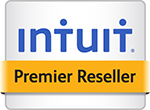Five Steps to Successfully Setting up QuickBooks for Contractors
A little planning and preparation on your part will ensure that you will have the information in QuickBooks needed to manage a successful construction business or help your clients with QuickBooks Premier for Contractors 2011.
Step 1: QuickBooks Lists
If you are new to using QuickBooks, these directions should help you get started using QuickBooks “quickly”. If you have already been using QuickBooks to track your construction financials, you will want to review this section for helpful tips on improving your use of the QuickBooks lists.
Chart of Accounts
The Chart of Account list is what your accountant will use to document your Assets, Liabilities, Income and Expenses on your business tax return. You might even want to ask your accountant to provide you with a standard Chart of Accounts. To modify or add to the chart of accounts, from the Lists menu select Chart of Accounts. If you created your file with the Easy Step Interview, you may already have an established Chart of Accounts. Review your Chart of Accounts; do you have Cost of Goods Sold account types? These should be general named accounts, for example, Material, Labor, Equipment, Subcontractor, and Other represent typical Cost of Goods Sold accounts for a construction company.
Budget Items List
I expect that for each project you bid you have created a list of your estimated costs on paper or perhaps using Excel. Typically, whatever items are on this list will also work well for you in QuickBooks. From the Lists menu, select Items. Most items will be of a service type. If you purchase product that is shipped directly to the job site, you might also select non-inventory as the item type. Only use inventory items if you will be storing the materials and will later be placing those materials on a customer invoice when sold.
Step 2: Customer and Job Settings
Often overlooked, are additional fields that you can customize for more detailed reporting.
Customer and or Customer:Job?
I am often asked, “do I need to setup Customers or Customer’s and Jobs in QuickBooks?”. It really depends on your business. For example, if your customer is the retail chain Target, and you are working at multiple store locations then Target would be the Customer and Store #1 would be the job. Click on the Customer Center on your icon bar to create both Customers and Jobs of Customers. However, if you only provide your services for one job site for a Customer, then you might just use the Customer. It is possible to create Jobs of Jobs, but I do not normally recommend it due to limited space on some reports and forms for viewing the complete name.
Customer or Job Type
Does your business provide both New Construction and Remodel services? These are typical examples of using the Customer or Job type fields to segment your QuickBooks reporting for management purposes. Create your Customer or Job types from the Lists, Customer & Vendor Profile Lists menu. Then select a Customer or Job in the Customer Center and assign the type on the Additional Info tab.
Job Details
With a Job selected on the Customer Center, select Edit Job. Optionally add Status, Start Date, Projected End and other details to your Job record on the Job Info tab.
Step 3: Job Costing Work-flow
With your lists ready, you are now ready to accurately, and efficiently assign costs to your projects.
Creating an Estimate
From the Home page, select Estimates. Enter the Customer or Customer:Job and row by row, assign your items created earlier. Enter a Quantity and Rate, where the rate is your actual cost not including any overhead or profit markup. The Markup column is important when viewing your Budget vs. Actual reports. Assign a dollar markup amount, i.e., $10.00, or a percent i.e., 20%.
Using Items on Expense Transactions
When entering a Bill or a Write Check form, use the Items Tab. Expenses recorded on the item tab will be compared with the Amount column total on the Estimate form in the Job Estimates vs. Actual reports.
Step 4: Invoicing Work-flow
Invoicing correctly is just as important to your customer as the actual construction project. With QuickBooks properly setup you can invoicing timely and keep your project financials on track.
Invoicing From the Estimate
There are several acceptable methods of invoicing your customer in QuickBooks. For the Job Estimates vs. Actual reports to provide accurate details you need to create your invoices from the line details on the Estimate. Open an Estimate and select Create Invoice.
Progressive Invoicing
Perhaps your business needs to invoice the customer in “stages” commonly referred to as Pay Applications or Draws. QuickBooks can also prepare these. From the Edit, Preferences menu, select Jobs & Estimates. On the Company Preferences tab, select the radial button “Yes” for Progress Invoicing.
Step 5: Reporting
Timely and accurate project reporting, that is our goal. To locate reports available for job reporting, select Reports, Jobs, Time & Mileage. In QuickBooks Premier Contractor you will have 14 unique reports including: Job Profitability Summary and Detail, Job Estimates vs. Actual Summary and Detail, Profit & Loss by Job to name just a few.
A version of this article was originally posted on the Intuit ProLine News Central Blog http://blog.accountant.intuit.com/?p=1388, free, no charge, sign up at http://blog.accountant.intuit.com/wp-login.php?action=register. Laura is invited to speak at many organizations on the use of QuickBooks, additionally, her firm offers one-to-one training for QuickBooks users. More information is available on website: www.quick-training.com.













